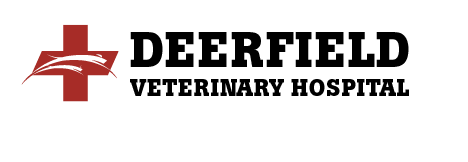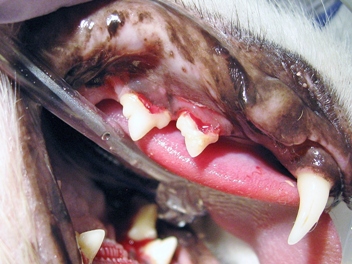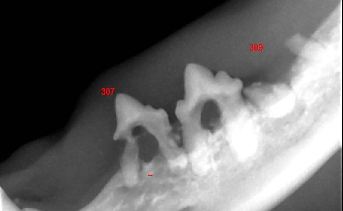Veterinary Dental Health Month.
“Periodontal disease is the most common clinical condition occurring in adult dogs and cats. By 3 years of age most dogs and cats have some evidence of periodontal disease” 1
Plaque is a soft, sticky, whitish mat-like film attached to the tooth surface that is formed by colonization of bacteria. Tooth brushing every day can remove plaque from the teeth. Tooth brushing is the gold standard of care to prevent gingivitis and gum disease in humans and pets.
For the busy house hold who does not have time to brush your pets teeth daily, don’t worry, we understand! There are plenty of other options to help prevent plaque and gingivitis for your pet. Here is a list of options to help prevent dental disease in your pet in order of effectiveness:
- Teeth brushing* Gold standard
- Many groomers also offer teeth brushing services!
- DentaHex Oral Care Chews for dogs OR CET Hextra treats for cats.
- Designed to take 1 – 20mins for complete consumption. This allows ample time for the enzymes in the treats to work their magic on the teeth. So to recap.
- Specially formulated diets such as T/D or Healthy Advantage Oral Care made by Hills (can also be used as treats!)
- Drinking water additives or mouth rinses
- Over the counter dental treats
- Only mildly helpful due to the speed they are consumed.
Gingivitis is the inflammation of the gum tissue. This can be caused by plaque and tartar build up around the gum line. If you have ever brushed yours or your pet’s teeth and noticed some blood in the saliva it was because of gingivitis. Gingivitis is the beginning of periodontal disease. Gingivitis can be prevented with good, at home dental care and attention.
Periodontitis is advanced gingivitis that threatens tooth viability.
Tartar/Calculus is hard yellowish to brownish-black deposit on teeth formed through mineralization of dead bacteria, dental plaque and the salts in salivary secretions. This when an anesthetized dental cleaning is warranted. No amount of brushing, flossing, special treats, foods or mouth washes will remove tartar and calculus. It is as hard as a rock and must be carefully and surgically scraped off with proper equipment so as to not damage the underlying tooth and enamel.
Periodontal Disease is graded 1 – 4. 1
Grade 1 – plaque and calculus are present causing gingivitis. Reversible with proper anesthetized veterinary dental cleaning
Grade 2 – Early periodontitis. Mild to moderate plaque and calculus, partial loss of gums and bone. Teeth may be able to be saved if treatment is pursued and quickly!
Grade 3 – Moderate periodontitis with moderate to significant plaque and calculus. Progressive destruction of the gum and bone. Teeth may need to be extracted. The pet’s mouth is sore and may cause eating or behavior problems.
Grade 4 – Advanced periodontitis with significant plaque and calculus. The pet’s mouth is painful and chronic bacterial infection is destroying the gum, teeth and bone. The bacteria can also spread to the blood stream and begin to colonize other organs such as kidneys, liver and heart. This is called bacterial translocation and endocarditis. Significant tooth loss is expected during a dental procedure.
If your veterinarian recommends a dental cleaning for your pet it is because we have found gingivitis, plaque and/or tartar and we are trying to prevent periodontitis and tooth loss. We want to intervene at grades 1 – 2 so we can prevent 3 and 4.
Do not be fooled by the “awake dental cleanings” that some facilities may offer. This type of dental cleaning is glorified teeth brushing. I think it is very helpful in prevention of dental disease but it does NOT replace a thorough veterinary oral exam and anesthetized dental cleaning procedure. For those owners who have reservations about general anesthesia we understand your concerns but we ask you not to worry. A veterinarian will not recommend a dental cleaning to you if they think there is a reason that your pet would not be a good anesthetic candidate.
At Deerfield Veterinary Hospital we offer the highest standard of care for your pet’s dental experience. All pets are under general anesthesia so every individual tooth can be assessed properly. We have special dental radiology equipment so we can visualize tooth root and bones to help aid in the assessment of tooth viability. Once all the teeth are cleaned and assessed, we will surgically and carefully remove any teeth that need to be removed and close up the defects that are left behind to expedite recovery and facilitate a pain free healing process. We have the same dental equipment that you would find in your own human dental office. We also have continuous EKG monitoring, in house blood machines and a dedicated technician to be with your pet for not only the dental cleaning but all the way through recovery and waking. Your pet’s safety and quality of care is our number one concern.
If you have questions or concerns about your pet’s dental health please call to schedule an appointment for a veterinarian to evaluate him/her.
1 – American Veterinary Dental College




